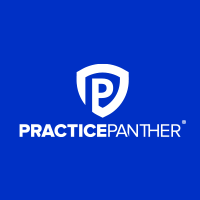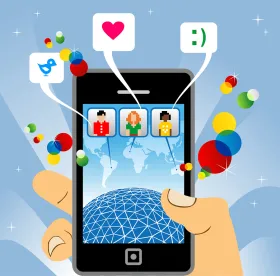Small law firms often find it difficult running their practice efficiently. There are numerous challenges and obstacles you must overcome in such a limited enterprise in order to achieve some solid success, especially if your small firm is concentrated on personal injury cases. The traditionally conservative legal market often prevents small firms from operating at their optimal capabilities.
The structure of a $300 billion U.S. legal industry is a well-oiled machine, while a small firm like an accident attorney in Huntsville, Alabama might struggle. It would be like a mom-and-pop store on the corner of a metropolitan city street – it’s probably got good stuff, but it will get lost among the sea of brand-name shops with better advertising. Personal injuries only seem like sprained ankles and paper cuts. But because the present U.S. regulatory scheme does not allow the industry to be structured the way it is, it has failed to innovate – stagnating over the last 50 years in customer experience due to its weak cost-cutting incentives, making it averse to risk.
But, like small firms, legal technology companies have begun planting their seeds. Legal Tech startups are being founded with the purpose of disrupting the traditional legal market through innovation with a new market and value network. While Legal Tech has been more commonly associated with the application of technology and software to help law firms with practice management, document storage, billing, accounting, and electronic discovery, in the last few years it has blossomed more into a means whereby access can be granted to people through online software that might reduce or even eliminate the need to consult a lawyer.
It also connects people with lawyers more efficiently through online marketplaces or websites that match people with the right lawyers they need. So if Ms. Jensen slipped on spilled orange juice without a Wet Floor sign nearby on aisle 4 at the grocery store and cracked her collarbone, her legal options for a personal injury case are much less of a burden on top of everything else she already has to deal with. There are now, even more, incentives for lawyers to become technologically competent due to the amendment to the Model Rules of Professional Conduct passed by the American Bar Association. Keeping abreast of relevant technology suggests room for competition, and competition requires innovation. Risk, say hello to Reward.
The Challenges of Small Personal Injury Firms
There are a number of challenges facing small firms today, especially in the area of personal injuries. One of the biggest challenges rem ains getting new clients. Of course, people tend to get injured often. But it’s not necessarily just about getting new clients, rather quality clients – that is, clients who will pay their bills on time, send referrals, etc. Small personal injury firms also have to deal with trying to manage any new clients they do get while continuing to serve the ones they currently have. The result is prioritizing and making difficult decisions, which can lead to the neglect of other important business matters.
ains getting new clients. Of course, people tend to get injured often. But it’s not necessarily just about getting new clients, rather quality clients – that is, clients who will pay their bills on time, send referrals, etc. Small personal injury firms also have to deal with trying to manage any new clients they do get while continuing to serve the ones they currently have. The result is prioritizing and making difficult decisions, which can lead to the neglect of other important business matters.
And this leads to the challenge of time management. How many hat racks do you have in your office to accommodate all the hats you have to wear while running your small firm? There winds up being so many administrative and technological bumps in the road of the daily grind that must be addressed. The worst part is you can’t bill a client for all that time lost. But even if you could, would the client be good about paying up?
Bill collection is another challenge for a small personal injury firm. With insurance companies becoming more hard-nosed about negotiating, they seem to rather pay for litigation than pay the settlement. And if you’re a small firm representing your client against a large insurance company, your chances of winning are tough. Especially when you’re so small that staffing and organization becomes an issue as well. The client is out of their settlement and you’re out of payment of a contingency fee.
As a small firm you also have to juggle finding and managing staff, managing costs and financing growth, managing your clients, and stabilizing your own mental and physical health in the process. If you find yourself unable to even handle a handful of clients up against big insurance, you’re left with referrals to larger firms. And then you’re stuck with fewer clients, going nowhere, trying to survive on referral fees.
How Legal Tech Can Help
Technology has rapidly changed the way we receive information and has also had a significant impact on the practice law as it must keep up with the growing and changing times. For example, consider the stacks of documents you might need just for an individual client or case. Most of us already keep important information organized on our computers, but what about we’re not in our office? In court? A public defender in New York uses her iPad for most of her work. An appellate attorney in Florida sticks to his Sony tablet. And a personal injury lawyer in Oklahoma loves his Android tablets. It helps him simplify the process, increasing efficiency and reducing paper clutter. Because working in civil litigation involves so many documents, personal injury firms can benefit tremendously from using tablets.
Mobile technology has reshaped the lives of clients and their expectation of service. Our ever-increasing connectedness is designed to save you time – that precious commodity you’ll need to better serve your clients, make room for new ones, manage your staff, costs, and finances, and still be able to take care of yourself and your family. In fact, there are even several apps for mobile devices that would specifically benefit a small personal injury firm.
Zapier is one such tool. It takes a bunch of apps you already use on a daily basis and integrates them so you can create automated tasks. For example, if you want an SMS text sent every time you make a change to your calendar or get an email from your client, Zapier kind of puts you on cruise control. And while Google Drive has a vast amount of uses, its direct integration with Google Docs allows you to edit a document right from your browser. Dropbox has a similar ubiquity to it, but it can prove to be essential to your personal injury firm. Its cloud-based storage makes it accessible wherever you are, on whatever device you use.
The advantage of iCap and Google Calendar also help you keep important times and dates organized as well. And like Google Calendar, Docket Law allows you to create events and deadlines for your matters based on the Federal Rules for Civil Procedure. It’s color-coded, user-friendly, and easily integrates with Google Calendar. MailChimp can help send automated and targeted email campaigns en masse. We all know communication is an essential part of the job, and Slack is a fantastic way to keep all of your internal communications in one place. It also makes messages, files, and notifications easy to search for.
Then there’s also Evernote, which allows you to take notes, scan business cards, snap pictures, draw accident scenes, and more. The most important aspect of Evernote, especially for personal injury firms, is it allows you to create a shareable database of trial materials that is organized in chronological order. But what can’t be done with Evernote can be done with BREEDOCS. This genius app helps you to present your story as a 3D timeline, complete with photos, videos, animations, and more. Perfect for the trial lawyer up against big insurance. It helps clarify connections and present some otherwise boring material in a fresh, innovative way, both to your clients and juries alike.
While some traditional personal injury lawyers believe it is the height of advocacy to simply stand in front of a jury and argue their case, the power of visual representations are crucial to incorporate on behalf of your clients. This cutting-edge mobile technology is a boon to the industry if you know how to make it work for you. Consider making iPads, tablets, wireless devices, projectors, illustrations, and other electronic representations of demonstrative evidence a part of your firm’s operations.
Another aspect of Legal Tech that can help your small personal injury firm is how you represent yourself online. While it may be difficult sometimes to manage office operations as a small firm, it’s vital to pay attention to your availability, accessibility, and recognition. Hire a marketing firm to produce quality web content, enhance the SEO of your website, design something catchy and aesthetically appealing, and get your name and reputation out there with some innovative means of interaction. For example, the best Huntsville accident attorney has a site that features a live chat function, in both English and Spanish. It has graphics, videos, a solid color-scheme, and highlights important bits of information accordingly. It also has outbound links that direct potential clients to their social media pages on Twitter, Facebook, Google+, and YouTube.
Social media is another important aspect of having a presence with Legal Tech in mind. Their site also features a blog. In the ABA 2016 Legal Technology Survey Report, the leading primary practice of firms who employ blogs was personal injury firms. This indicates what most of us already know: that blogs and Legal Tech, in general, is more popular among B2C rather than B2B practices. Blogging is an effective way for lawyers to generate traffic, demonstrate their expertise, develop relationships with strategic alliances, potential clients, and yes, even referral sources. This alleviates the challenge of finding new clients – the people for whom your blogs will help you create resources for.




 />i
/>i
